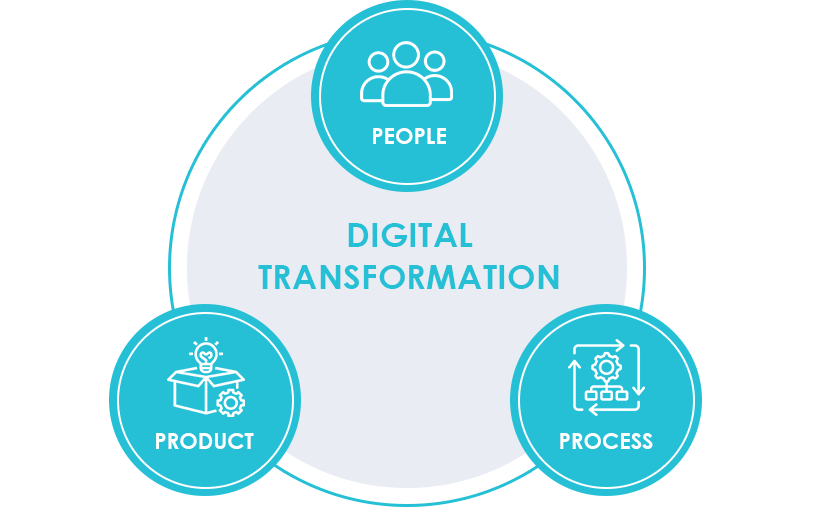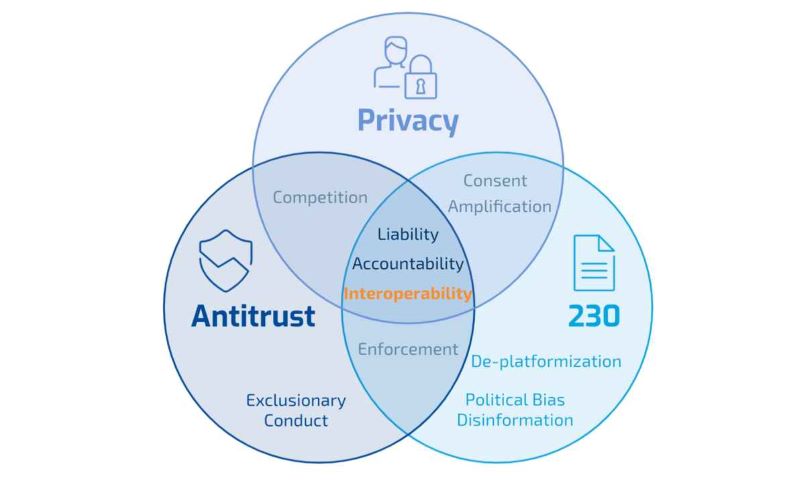Digital transformation definition—it’s a phrase thrown about like confetti, yet it carries the weight of a business revolution. Your company is on the brink; behind buzzwords and tech trends lies the power to reshape your entire operation. From redefining what you offer to rewriting how you engage with customers, it’s the epic rewrite of the business script. Today, I’m pulling back the curtain to show you what this buzz really means for your bottom line. Ready to transform not just your technology but your whole business game? Let’s dive in and decode the hype, step by step, tool by tool.
Demystifying Digital Transformation
Exploring the Core of Digital Transformation
What is digital transformation? At its simplest, it’s about using tech to improve your business. But, let’s cut through the jargon and really get down to what that means. Imagine you have a notebook where you keep all your important info. Digital transformation is like moving that info to your computer. Instead of flipping pages, you click and find everything faster.
Now, why is this change important for your business? For starters, it can make your work quicker and smarter. With everything digital, you get more done in less time. Also, you can see clearly what’s going on in your company. It’s like having a bird’s eye view of everything.
Let’s think about shopping. Remember when we had to go to the store for everything? Now, we buy stuff online, easy and fast. That’s what digital transformation can do for your business too. It’s like opening a store on the web where the world can shop from you, anytime.
How Digitalization Reshapes Business Models
When businesses go digital, they change in big ways. It’s called digitalization of businesses. Think of it as making a paper airplane that can actually fly far and high. It’s not just paper anymore; it’s something much cooler.
Before, a company might sell things in a store. With digital, they can sell to anyone, anywhere with a click or tap. Going digital can also help you know what your customers like or don’t like, real quick.
Take a pizza shop for example. By going digital, they can let you order your pizza with an app. They can even keep track of what toppings you love. Next time, they can suggest your favorite pizza even before you ask.
And guess what else? Embracing digital technology can save you a lot of money. How? Well, let’s say you make toys. If you use digital tools, you can design and test toys without making a real one first. This means you spend less on materials until you’re sure you got it right.
But, it’s not just about computers and the web. It’s about using tech to make your whole business better. Like, using robots to help make things, or programs that can guess what might happen next in your business.
Plus, when all your work is digital, it’s easier to change things up when you need to. All the big companies do it, and so can you. It’s like having a secret superpower where you can shift your business in a blink.
So, wrapping up, digital transformation unpacked means: using awesome tech to do better business. Whether it’s selling online, using apps to connect, or making things smarter and faster, going digital can take your business way up high. Just like giving your business a cool pair of tech wings to soar!
The Building Blocks of a Digital Strategy
Crafting a Digital Transformation Roadmap
Let’s talk clear and simple about making a digital change plan for your company. Imagine you’re on a big road trip – the destination is a business that’s all digital and up-to-date. This plan is your map; it shows you where to go and how to get there.
First step: Know what digital transformation is. It’s when businesses use tech to boost how they work and keep customers happy. We use computers, smartphones, and the internet non-stop. So, firms must use these tools to keep up and rock it in the digital world.
Now, a roadmap helps you see what’s ahead. You figure out what you need and set up checkpoints. It’s about picking the right tech and laying out steps to use it well. Got a small store? Maybe start selling things online. Run a larger place? You might need new software so teams can work from anywhere. Every business has a unique path.
Identifying and Leveraging Drivers of Digital Change
What pushes a business to change? Customer needs, fresh tech, and new trends play a big part. People today want easy and quick services, no matter where they are. And they want it now. So, if you figure out what drives your business to change, you can use it to your advantage.
Let’s say more folks want to shop using their phones. A smart move for businesses is to make their websites easy to use on mobiles. That’s giving customers what they want and staying ahead in the game.
Tech like AI and cloud computing can seem big and scary. But they’re awesome tools that can help solve problems and save time. Using these can help businesses grow and do things better than before.
In the end, it’s all about setting goals, planning well, and staying on track. The right roadmap can lead to a smart business that wins big in the digital age. It’s important you don’t just jump onto new tech. Stop and think about how these changes make your business better. Only then, take steps to bring in the tech that makes sense for you.
Implementing Transformation Technologies
Integrating AI and Cloud Computing into Operations
You know, in our world today, tech is a big deal. It changes how we do business. Think of digital transformation as a massive update to how companies work. It’s like when you get a new phone. Your old phone worked fine but the new one? It is faster, smarter, and does so much more, that’s what AI and cloud computing are to businesses. They make things run better.
Imagine you own a toy store. You’ve got toys on shelves, but you’re still using paper to track sales. Now, let’s say you decide to bring in AI. The AI is like a super-smart helper who can tell which toys will be popular. It can order new ones before you run out. It can even spot cool new toys kids might love.
Then, there’s cloud computing. Think of it like a magic bag. It can hold all your sales info but it’s not in your store. It’s up in the cloud, safe and sound. You can peek into this bag from anywhere, any time, on any device. This tech is big for businesses. They help you do more with less hassle.
Overcoming Barriers to Tech Adoption
“When the world zigs, zag,” they say. And when it comes to business, being ahead means winning. But sometimes, it’s tough to try new things, like tech. Folks get used to the old ways. The trick is to show everyone how this new tech can be their friend.
You might feel it’s too much money to spend. Or maybe, you aren’t sure how to start. These are real bumps on the road to going digital. Just remember every business, big or small, faces these challenges. You’re not alone.
First, get the facts. Know what tech can do for you. Can it save you money? Will it make customers happier? Once you’ve got the reasons, build a plan. This is your map to a place where your business is faster and stronger.
Then, talk to your team. Get them as excited as you are. Show them the shiny new tools they’ll get to use. Share stories of how other stores did it and won big. This makes the idea of change less scary.
Technology is just a tool. Like a hammer or a saw for a carpenter. We use tools to build and create. And that’s what tech is for. It helps us build better businesses and create cool new things for the people we serve.
Adopting AI and cloud computing is like giving your business superpowers. But even superheroes have to learn how to fly. So, give it time. Keep learning, and before you know it, your business will be soaring high, all thanks to these new digital wings.
Measuring Success and Navigating Challenges
Key Indicators of Digital Transformation Outcomes
How do you know if digital change works well? It’s not magic. Look for strong signs, often called key indicators, which tell us if things are on track. On this exciting journey, we watch for stuff like better customer happiness, faster task finish times, and more sales. If customers smile more and buy more, that’s a win. It means our steps towards digital are paying off. People are happy, and so are we.
But there are more signs to watch. Digital smarts in a company are like muscles that need to workout. So, we check if our team gets better at using new tech tools. Maybe they use cool chatbots to talk to people or analyze loads of data fast. If our team can do that, it means we’re building digital muscles. And don’t forget, saving money is a biggie. If we spend less but still get the job done, digital transformation is surely pulling its weight.
Addressing the Challenges of Digital Innovation
Going digital can be tough, no lie. What’s pulling us back? It’s the roadblocks we might face. Some are like big walls we need to climb over. But hey, we’re good at climbing, right? The trick is to face each barrier one by one. Some workers might not like new ways. We need to show them how cool and handy these ways are.
Next up, sometimes the tools we pick just don’t play nice together. That’s where we have to act like peacemakers and make sure they work as a team. And yes, we also need to keep our eyes open for laws that say what we can and can’t do digitally. We gotta play by the rules.
Doing this helps us move forward without tripping. It’s not a stroll in the park, but it’s what makes us unbeatable. When we face these challenges head-on, we get better, just like playing a video game. The more we play, the better we get.
Remember though, the game changes, kinda like how fashion does. What worked yesterday may not work today. So, we must keep learning. We hang out where trends are, maybe read about them or talk to smart folks. We learn about stuff like AI, the cloud, and keeping data safe. This way, we ride the wave of the future, not get hit by it.
Keeping up with these things helps us in a big way. We become the business that leads the pack. We outsmart the troubles and come out shining. Transforming our business with tech is like planting a garden. It takes work, but oh boy, the blooms are worth it! It’s about growing, getting stronger, and winning the game of digital transformation.
In this post, we dug into what digital transformation really is and how it changes business models. We then laid out the steps to build a strong digital strategy, from mapping it out to spotting what drives the change. We also looked at how to bring in new tech like AI and cloud computing and how to deal with the tough parts of getting used to these tools.
My final say? Embracing digital changes is no small task, but it’s a must-do. It’s all about picking the right technologies and fitting them into your company in a clever way. Stick to a solid plan and keep an eye out for both wins and bumps on the road. By doing this, you’re sure to keep moving forward in the digital age. Success lies in how well you adapt, innovate, and overcome the tests along the way. Let’s make the most of our digital journey together!
Q&A :
What is meant by the term ‘digital transformation’?
Digital transformation refers to the integration of digital technology into all areas of a business, fundamentally changing how it operates and delivers value to customers. It’s not just about upgrading systems; rather, it’s a holistic rethinking of business models, processes, and organizational culture to drive innovation and improve efficiencies using digital tools and technologies.
How does digital transformation impact businesses?
Digital transformation impacts businesses by enabling them to become more agile, responsive, and efficient in their operations. Through adopting new digital practices, businesses can better engage with customers, automate processes, and leverage data analytics for informed decision-making. This often leads to increased competitive advantages, the opening of new markets, and improved customer experience.
What are the key components of digital transformation?
The key components of a digital transformation generally include:
- Customer Experience: Enhancing customer interaction through digital channels.
- Operational Processes: Streamlining and automating processes to improve efficiency.
- Business Models: Revising or creating new business models to take advantage of digital technologies.
- Organizational Culture: Encouraging a digital-first mindset and fostering a culture that embraces change, innovation, and collaboration.
- Digital Technologies: Implementing emerging technologies like cloud computing, big data analytics, Internet of Things (IoT), artificial intelligence (AI), and more.
Why is digital transformation important for growth?
Digital transformation is important for growth as it allows organizations to adapt to changing business landscapes and consumer expectations. By embracing digital technologies, companies can create new revenue streams, improve operational efficiency, and stay ahead in an increasingly digital marketplace. It enables scalability, innovation, and the agility needed to respond to market shifts and customer needs quickly.
Can digital transformation provide a competitive advantage?
Yes, digital transformation can provide a significant competitive advantage. Companies that successfully implement digital strategies can enhance their product offerings, streamline operations, personalize customer experiences, and react swiftly to market changes. Those that fail to adapt risk falling behind as the marketplace becomes more reliant on digital capabilities.






